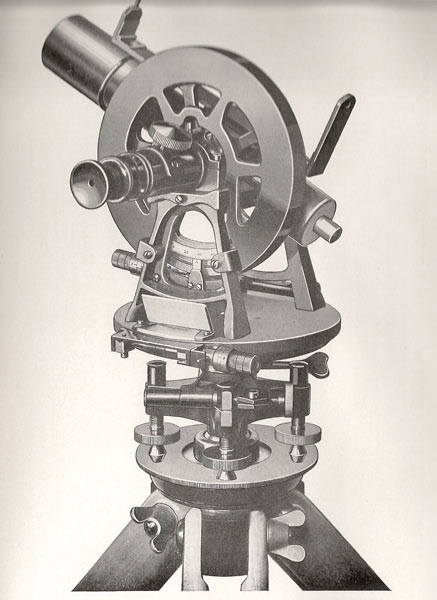Buff & Buff Balloon Theodolite c. 1918 Type ML-47
The Buff & Buff theodolite was the mainstay of U.S. Meteorological Observations until the adoption of the David White/Warren-Knight Series in the 1940's.
The instrument in my collection photographed below is from 1938. It is believed to be one of the later production instruments. It includes a lighting system and a folding gun site. It is a quite large instrument. Shown below with an English contemporary the Throughton & Simms pibal theodolite from 1921 for size comparison.
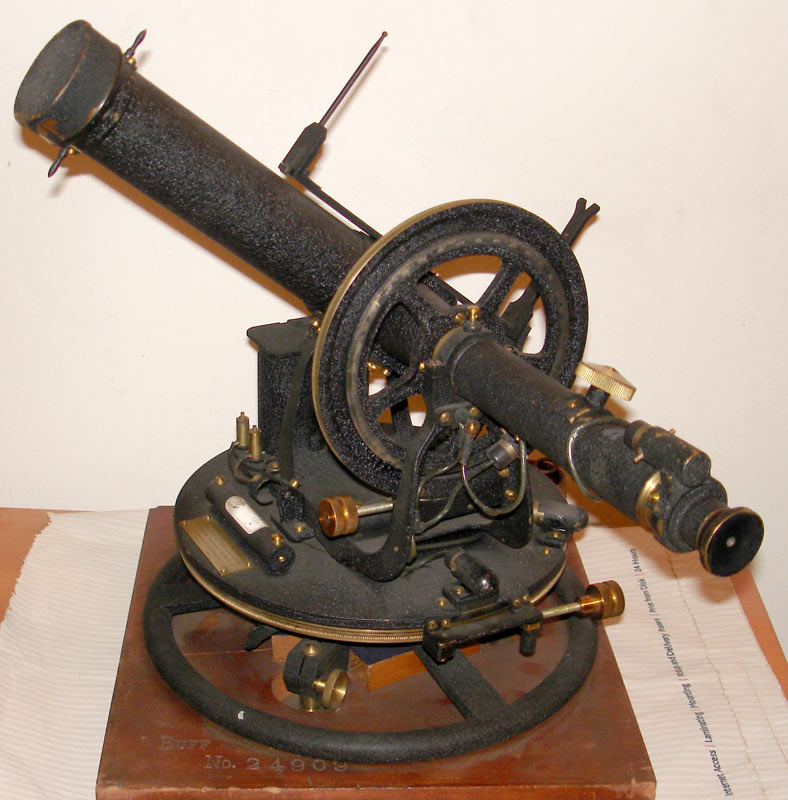 |
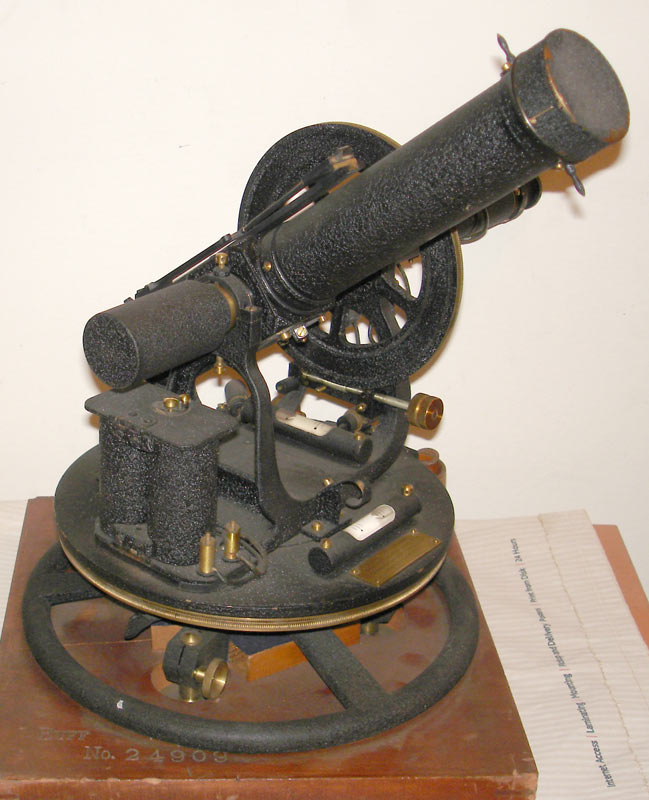 |
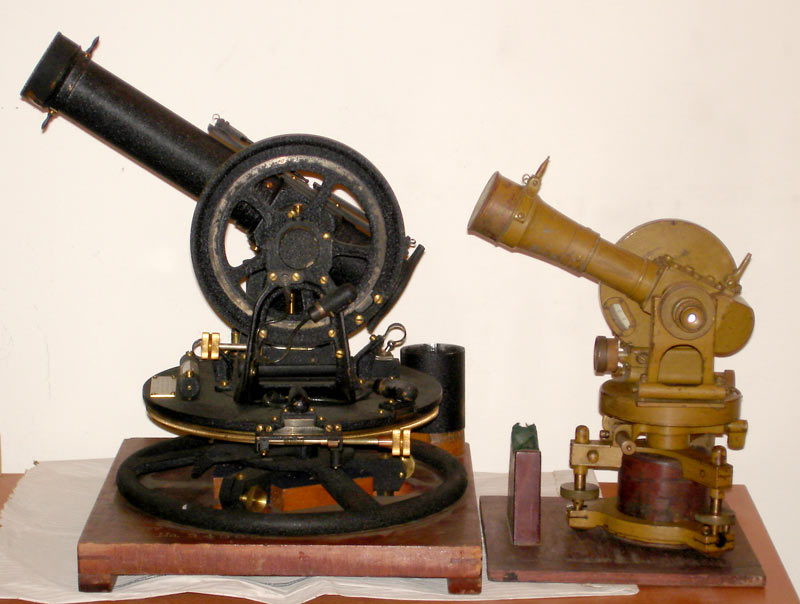 |
 |
The theodolite illustrated here is a vernier type and is seen in publications dating from the 1920's (military and civilian.) This illustration is taken from "United States Army, Training Manual No. 31, Meteorological Observers, Instructor's Guide For All Arms, 1925. The theodolite is listed as "special aircraft, type ML-47".
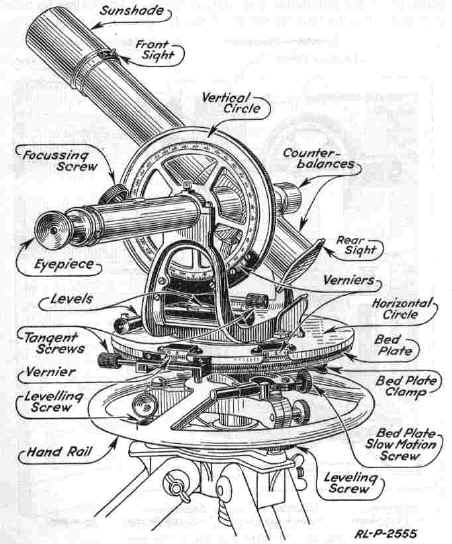
An interesting fact about this device is that it is broken down into three pieces for storage. The vertical circle, prism and telescope assembly is removed from the standards, and the base is stored, then the eyepiece, and right angle tube including the focusing screw is removed and stored. The three parts are reassembled for use. The Buff & Buff instrument has a very long eyepiece tube assembly. So long that the eyepiece tube must be removed from the theodolite for storage and transport. The comparison photo above shows the instrument with the eyepiece tube removed and the cap placed on the theodolite body. The threads are quite fine and cross threading or other damage could result in the removal and re-installation process. The 1938 instrument has a case design that does not require removal of the vertical circle and telescope for transport. So the instrument only breaks down into to parts (eyepiece tube and the rest of the instrument.)
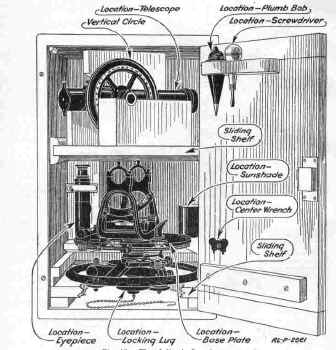 |
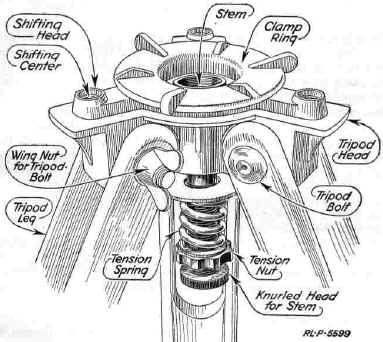 |
An example of this theodolite is in the collection of the Smithsonian Institution National Museum of American History use this link. Information on the museum's page notes the instruments appearance in a 1918 Buff & Buff catalog.
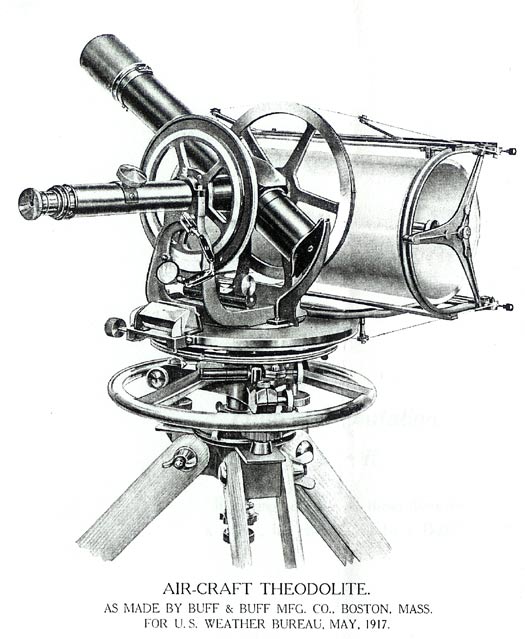
A recording version of this instrument was shown in the catalog and the simpler version is referred to but not shown. Thanks to Deborah J. Warner, one of the museum curators for writing me about the museum's collection and providing Buff and Buff catalog information.
It is interesting to note that the the David White 6061instrument which replaced the Buff & Buff ML-47 in the inventories of the US Weather Service and Army Signal Corps incorporates a shorter eyepiece tube, micrometer drums and more modern tripod mount than the Buff & Buff ML-47. In a 1938 Buff & Buff Catalog there is an image of a ML-49 Pilot balloon theodolite that also incorporates these improvements over the Buff & Buff ML-47 described on this page. I have found no images or text referring to procurement or use of a Buff & Buff ML-49.
